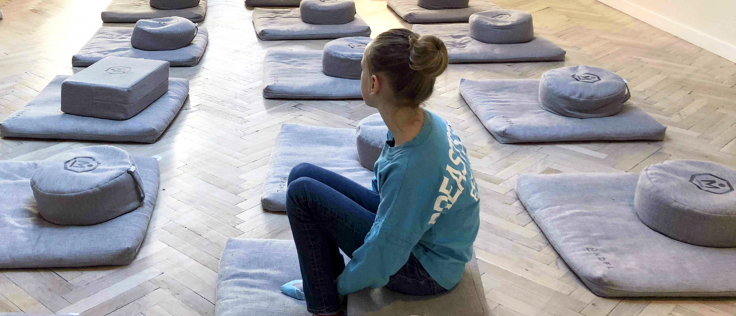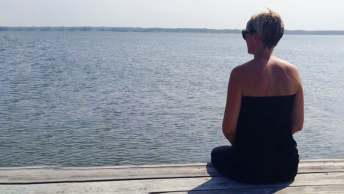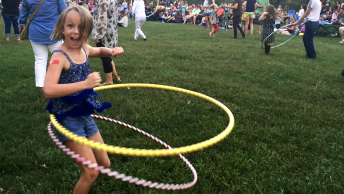The art of meditation and mindfulness can feel a little woo-woo for many mothers. I mean, who has time to sit in silence and stare at the inside of their eyelids, when they have 67 items to check off their to-do list before lunchtime? Trust me, I know. But don’t give up before giving this duo a whirl.
I’m going to break down the difference between the two, so you can see what they have in common, how they differ, and the all-around amazing benefits they produce.
By definition, mindfulness is about being aware of the present moment, whether you’re parenting, working, or scarfing a Snickers bar alone in the car before pickup. It’s the art of peacefully responding to what’s going on now, without beating yourself up about the past (screaming at your son this morning) or imagining a wrecked future (getting passed up for your next promotion). It’s the doorway you walk through to find relief from the nagging voice in your head that points out everything you’ve done wrong and almost nothing you’ve done right.
In other words, mindfulness is your best shot at peace on earth.
So where does a meditation practice come into play when searching for peace? Well, meditation is simply the technique you use to train your mind to embrace mindfulness when you need it most—you know, like when you’re about to lose your ever-loving mind over your boss’s micro-managing ways. Don’t make the mistake of assuming that since you’re sitting in silence that meditating is simply about finding calm in only that moment.
The magic of meditation is how the experience of peace and tranquility actually sticks to you like glue for the rest of the day.
If you can work toward not bowing down to your irrational thoughts during an early morning meditation (you’re a terrible cook, all the moms at your son’s school think you suck, you let everyone down at work), then you can bring that same practice to other times in the day when shit hits the fan.
For example, let’s say one morning you listen to a guided meditation that invites you to imagine your truest self or your soul as the deepest part of the ocean—always stoic, always calm—and to imagine the circumstances of your life as the winds that blow around the water on the surface.
While you digest this during a moment of silence, this metaphor could easily come in handy that evening when your son freaks out about his upcoming science test. Instead of riding with him on the waves of anxiety, you can draw strength from the stability of your core and be the calm in the storm that he’d like you to be. And when you and your husband get into a fight, you’re better equipped to know that this too shall pass, and that a small argument doesn’t have to send your mind fast-forwarding to an imaginary, fatal divorce.
And just like that, meditation leads to the magic of mindfulness.
Several years ago I introduced my daughter to meditation by taking her to a class in NYC, so she could start using this to navigate her busy life, mind, and world in a healthy way.
Now, if the idea of sitting in silence for 15 minutes and focusing on your breath is a no-go because you’d be too tempted to write your grocery list while doing so, then look to the experts like I do.
I’m a big fan of Headspace and 10% Happier meditation apps, and right now I’m following a free 21-day meditation program by Deepak Chopra and Oprah Winfrey. Insight Timer is a wonderful (and free!) meditation app.
Is finding an extra five, ten, or fifteen minutes for a morning meditation easy for a busy mother? Absolutely not. But just like going to the gym makes your body stronger, meditation makes your mind stronger, so it’s never a waste of time. And let’s all just acknowledge that we could easily subtract ten minutes from scrolling through Instagram (again) and nobody will notice.
And when you reserve this time for yourself, you’ll experience the greatest benefit of mindfulness—the ability to think clearly and make decisions based on what is true to you, rather than muddled distractions from the negative voice in your head.
Think of your mind and decision-making ability as a mason jar filled with water, muddy sand, and rocks. The more you shake the jar, the murkier and foggier the water becomes, right? But if you can calm your mind and avoid rattling that jar around, then the mud and rocks settle, and the water becomes clear.
And that is the environment and mindset in which you want to be making decisions.






